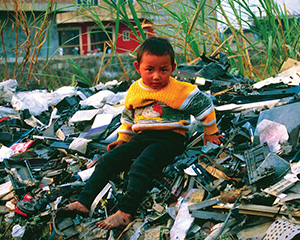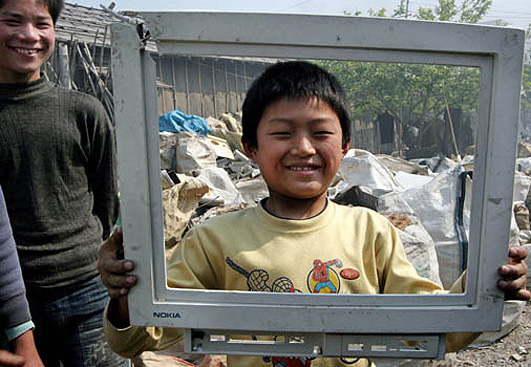Join the Green Side – E-waste and Children

Featured Image: Source
In every developed nation, it is common for children to play with electronic gadgets. But, developing countries depict a completely different scenario. Children belonging to poor families work to dismantle those gadgets and earn a small livelihood, making the rubbish their treasure. However, it also exposes them to harmful radiation. As the use of electrical and electronic equipment (EEE) has increased substantially, it has given an equal rise to e-waste production on daily-basis all around the world. Therefore, the informal sectors of developing, industrialized countries are particularly relying on recycling the valuable materials extracted from e-waste, such as, copper and gold. Additionally, with primitive recycling techniques, like, burning cables to retain the inherent copper, has exposed workers, both children and adults, to various hazardous substances.
Don’t Refuse to Reuse or It’s the Kids You Abuse!
Children, especially, need more protection as they are vulnerable to the health risks resulting from e-waste exposure. Due to their growing age, children, as compared to adults, have significantly greater intake of air, water and food in proportion to their weight- increasing the risk of hazardous chemical absorption.
Moreover, certain other functional systems of children, for instance, central nervous, immune, reproductive and digestive systems are still developing. By being exposed to toxic substances, and hampering further development, kids may experience some irreversible damages. There are many children who are also exposed to e-waste derived chemicals in their day-to-day life because of unsafe recycling activities. These may be conducted at their homes, either by a family member or by the children themselves. In addition to this, they may be exposed to these hazardous elements because of the dump sites that are close to their homes, schools or playgrounds.

Image: Source
Kids’ health is also affected from neuro-toxicants in e-waste. They can be exposed to these neuro-toxicants through contaminated air, water and soil. The harmful effects of being exposed to e-waste materials can reach even higher levels for young children, as they are at critical window of neuronal growth.
Initiatives for Improvement:
Over the past few years, many international organizations have called for an action to focus on the need of strategic intervention in e-waste management. They are emphasizing on thinking creatively for effective e-waste management. For instance, the Busan Pledge for Action on Children’s Environmental Health of 2009 issued at the International Conference on Chemical Management ICCM3 in 2012. Further international initiatives have been taken to address global e-waste management and trade concerns, and to deal with other environmental issues resulting from e-waste.
About The Author Kelly Sampson
Kelly Sampson is a writer, blogger, and environmental enthusiast. She has strong opinions about climate change, the dogs vs. cats debate, and Oxford commas. She has lent Hummingbird International her engaging and spirited voice and turned our blog into a great place to find valuable information about e-waste, e-waste recycling, and the ITAD industry. Explore our blog to read more of her work.






